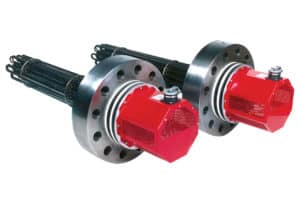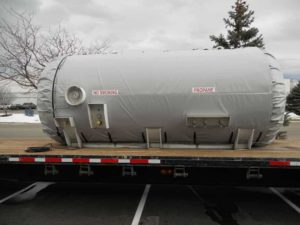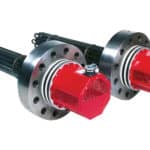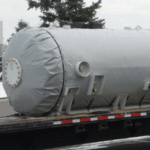Tanks are a vital part of so many processes and many of them need to be heated. There are almost as many ways to heat a tank as there are types of tanks. Steam coils, heat transfer systems, direct immersion, tank wraps or heat trace; the list goes on and on. Knowing that there are many different types of heat that can be effectively applied would drastically improve the best selection for your application.
What are the different types of tank heaters?
Today, we are going to discuss several different methods that can be used to heat a tank that you may have not known about in the past. Steam trace is one exception. We won’t talk about that one much because we don’t sell steam trace systems. They’ve been around for over 100 years, and everyone pretty much knows about them. Comparing steam trace to steam engine locomotives is a pretty good comparison when you see some of the new technology available.
All tank heating systems technically are not really heating a tank. They are heating the product in the tank. Tank heating systems use either a direct or indirect method of heating that product.
- Direct is when a heater is directly placed into the liquid from outside the tank, and heats that tank content.
- Indirect is when product is pumped into a coil system and is not in direct contact with the tank product. Heat is transferred to the process through an exchanger or coil system.
We will take a look at several modern effective methods to heat a tank directly or indirectly.
Direct Tank Heating
Examples of direct tank heating systems include flanged or screw plug heaters, pipe insert heater, side arm heaters or DHG systems.
Flanged immersion/screw plug or pipe insert heaters are installed into a tank, and directly contact the liquid. The interface or connection point between the heater and tank is generally a pressure rated flange or NPT connection. Heater temperature control is done by way of a sensor placed in the tank liquid, and that sensor notifies a temperature controller so that it can decide to add or not add heat. These heaters often utilize a heater sheath overtemp sensor that watches the surface of that heater so that it does not overheat or cause damage to the tank contents.
Below are several examples of direct tank heaters:

- Flange Immersion Tank Heater
- Pipe Insert Heater
- Side Arm Circulation Heater
- DHG Heater
Indirect Heating
Many times it is not possible or effective to use a direct heater due to equipment internal to the tank like mixers, or the need to contain the liquid by way of a double wall construction. Indirect heat relies on the tubes or tank wall to transfer heat to the tank contents to either maintain their temperature or heat them up. With this in mind, it is important to consider how well your tank wall or the coils used will transfer heat to your process.
A good example would be if we were going to install square tank pad heaters on the side of the tank to keep that tank at temperature. Attaching that tank pad heater to the tank, we rely on the tank wall that it is attached to to transfer the heat to the tank product. Steel for example is a very common product to make tank walls out of. Steel has a specific heat of .12, which is very poor at conducting heat. Be sure to allow for low heat transfer of steel when taking into account heat transfer.
Below are a few examples of an indirect heater:
- Heat Trace
- Heated Blankets
- Glycol/water or hot oil heat transfer systems
How do I select the right industrial heating solution?
Powerblanket was created to understand and solve heating issues relating to total temperature control. If you’re ready to make a selection, talk to our process heating engineers about which heater control panels might be a good fit for your heating processes.
Powerblanket's custom tank heaters provide freeze protection, making your business more sustainable and efficient.





